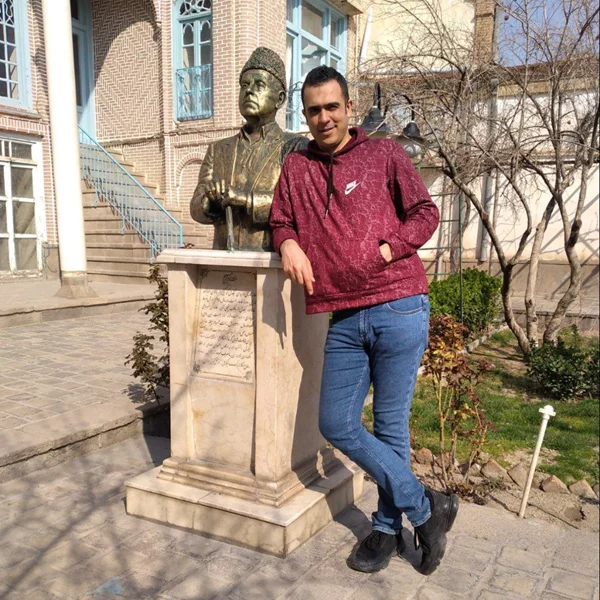میشه جواب این سوال فنی در باره ی عکاسی رو به انگلیسی بدید . در حد چند خط.
What is "aperture," and how does it affect depth of field in photography?
١٤ پاسخ
Aperture refers to the opening in a camera lens through which light passes to enter the camera. It’s one of the three pillars of photography, alongside shutter speed and ISO. The size of the aperture is measured in f-stops (e.g., f/1.8, f/4, f/16), with lower numbers indicating a larger opening and higher numbers indicating a smaller opening.
Depth of field (DoF) is the range of distance within a photo that appears acceptably sharp. Aperture plays a crucial role in controlling depth of field:
Aperture is a fixed or variable hole in Farsi called "
دیافراگم یا روزنه
" through which light enters the camera or an optical instrument. Wider aperture is opened, depth of field gets shorter and depth of field gets longer when aperture gets smaller.
دیافراگم سوراخ ثابت یا متغیری است که در فارسی به آن «دیافراگم یا روزنه» می گویند که نور از طریق آن وارد دوربین یا ابزار نوری می شود. در دیافراگم باز، عمق میدان کوتاهتر می شود و با کوچکتر شدن دیافراگم عمق میدان بیشتر می شود. وقتی عمق میدان بیشتر است همه چیز در تصویر در حالت متمرکز و روشن خواهد بود اما با دیافراگم کاملا باز تنها پیش زمینه نمایان و متمرکز بوده و زمینه مات خواهد بود.
Aperture refers to the opening in a camera lens that controls the amount of light entering the camera. It is measured in "f-stops" (e.g., f/2.8, f/4, f/16), where a lower f-stop number indicates a larger opening that allows more light to pass through, while a higher f-stop number indicates a smaller opening that allows less light.
دیافراگم به دهانه لنز دوربین اشاره دارد که میزان نور ورودی به دوربین را کنترل می کند. در "f-stop" اندازهگیری میشود (به عنوان مثال، f/2.8، f/4، f/16)، که در آن عدد f-stop پایینتر نشاندهنده دهانه بزرگتری است که به نور بیشتری اجازه عبور میدهد، در حالی که f-stop بالاتر عدد نشان دهنده یک دهانه کوچکتر است که نور کمتری را می دهد.
In photography, **aperture** refers to the opening in the lens that controls how much light enters the camera. It is represented by an "f-number" or "f-stop" (like f/2.8, f/5.6, f/11, etc.). The size of the aperture directly affects two key factors: the amount of light hitting the camera sensor and the **depth of field**.
How Aperture Affects Depth of Field:
1. **Wide Aperture (low f-number, e.g., f/1.8 or f/2.8)**:
- **Shallow Depth of Field**: A wide aperture creates a shallow depth of field, meaning only a small portion of the image will be in sharp focus. This is ideal for portraits or situations where you want to blur the background and isolate the subject.
- **Example**: In a portrait with f/2.8, the person’s face will be sharp, but the background will appear soft and blurry (often called "bokeh").
2. **Narrow Aperture (high f-number, e.g., f/8 or f/16)**:
- **Deep Depth of Field**: A narrow aperture increases the depth of field, meaning more of the scene, from the foreground to the background, will be in focus. This is useful for landscape photography, where you want as much detail as possible to be clear.
- **Example**: In a landscape shot with f/16, both the mountains in the background and the grass in the foreground will appear sharp.
Summary:
- **Wide aperture (low f-number)** = shallow depth of field (more background blur).
- **Narrow aperture (high f-number)** = deep depth of field (more of the image in focus).
What is "aperture," and how does it affect depth of field in photography?
The aperture is the opening of the camera that usually control the amount of the entering light that pass to the digital image sensor or film. It also has effect on the depth of field, so that the wider aperture will result to focused photographs and shallow depth of field, while smaller aperture will lead to less focused photographs and deeper depth of field.
How does aperture affect depth of field?
Depth of field determines which parts of your photo are in focus — and aperture lets you control that depth of field. The relationship looks like this: A wide aperture gives you a shallow depth of field (only the foreground is sharp) A narrow aperture gives you a deep depth of field (everything is sharp)
The aperture is the opening in the lens that allows light to enter the camera and onto the sensor or film. The size of this opening can be adjusted by changing the aperture settings. Take a look at the picture of a lens aperture above. Notice the adjustable blades that can move to adjust the size of the opening.
Larger f-stops, such as f/11, will require slower shutter speeds or more light and produce images with larger depths of field (more of the scene is in focus). Smaller f-stops, such as f/4, will allow faster shutter speeds or less light and produce images with shallower depths of field (less of the scene is in focus)
Depth of Field (DoF) refers to the distance between the closest and farthest objects that appears acceptably sharp in a photograph. In other words, it's the area in front of and behind the subject that appears in focus.
Similar to the pupil in the human eye,the aperture opens and closes (in the camera's case,a set of blades) to control the amount of light passing through the lens. The larger the aperture opening (f-number: smaller aperture value), the greater the amount of light that passes through it.
The aperture is just an opening in the lens. F/16 is a very small one, f/1.8 is a large one, but they both see the same FOV. It's the same with your eyes - when you go out on a bright day your pupils stop down to a small size to let in less light, but you still have the same.
The narrow aperture results in more depth of field because light that is forced through the small opening results in objects being more in focus, even if the lens isn't properly focused on the subject. The distance between your camera and your subject has a huge impact on how much of the photograph will be in focus.Manipulating the aperture is the easiest and most often utilized means to adjust Depth of Field. To achieve a deep, rich and expansive DOF, you'll want to set the f-stop to around f/11 or higher.
Aperture refers to the opening of a camera lens that allows light to pass through. It is measured using the f-number or f-stop scale. The size of the aperture affects the depth of field in photography. A large aperture (small f-number like f/1.8) creates a shallow depth of field, resulting in a blurred background and a focused subject. Conversely, a small aperture (large f-number like f/16) produces a greater depth of field, keeping both the subject and background sharp.
A wide aperture gives you a shallow depth of field (only the foreground is sharp) A narrow aperture gives you a deep depth of field (everything is sharp
دیافراگم باز به شما عمق میدان کم می دهد (فقط پیش زمینه واضح است) یک دیافراگم باریک به شما عمق میدان عمیق می دهد (همه چیز واضح است
در نورشناسی، اَپِرچِر (به انگلیسی: aperture) یا دریچه یک حفره یا روزنه است که نور از آن عبور میکند.بهطور خاص در عکاسی، اپرچر و فاصله کانونی، زاویهٔ پرتوها را تعیین میکنند که به کانون عدسی میرسند و سپس روی حسگر تصویر تابیده میشوند.
a space through which light passes in an optical or photographic instrument, especially the variable opening by which light enters a camera.
One of the three parameters is exposure, and by increasing and decreasing the aperture of the lens, it affects the amount of light entering a photo. The larger the aperture, the brighter the image and vice versa. But the larger the aperture, the smaller the distance that produces sharp images.
Aperture is the lens opening in photography, controlling light and depth of field. A wide aperture creates a shallow depth of field, blurring the background. A narrow aperture results in a greater depth of field, keeping more of the image in focus.
Aperture is one of the three exposure parameters and affects the amount of light that enters a photo by enlarging and reducing the aperture of the lens. The larger the aperture, the brighter the image and vice versa. But the larger the aperture, the smaller the distance that produces sharp images.
the opening in the lens that allows light to enter the camera and onto the sensor or film. The size of this opening can be adjusted by changing the aperture settings.Aperture and focal length each contribute to composition in their own unique way. When you learn how to pair different aperture and focal length measurements together, you can take gorgeous, jaw-dropping photographs.






